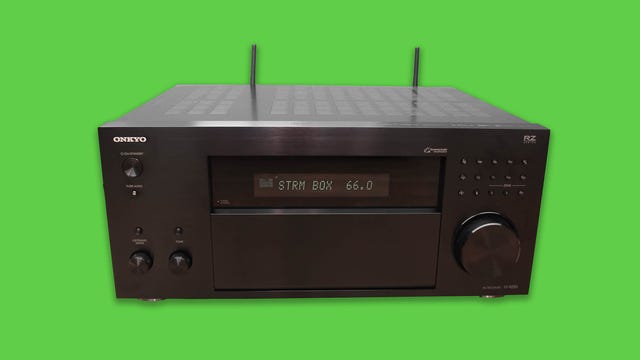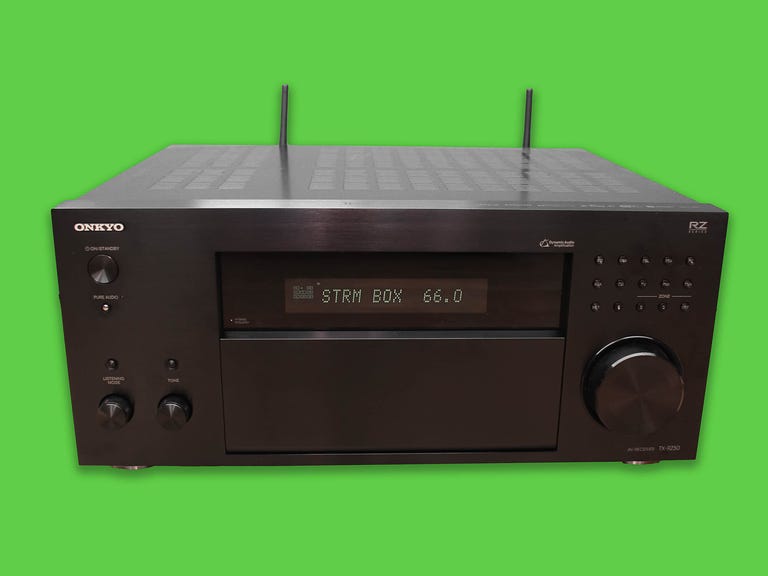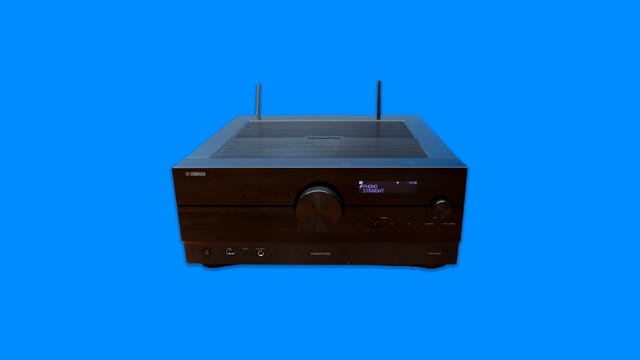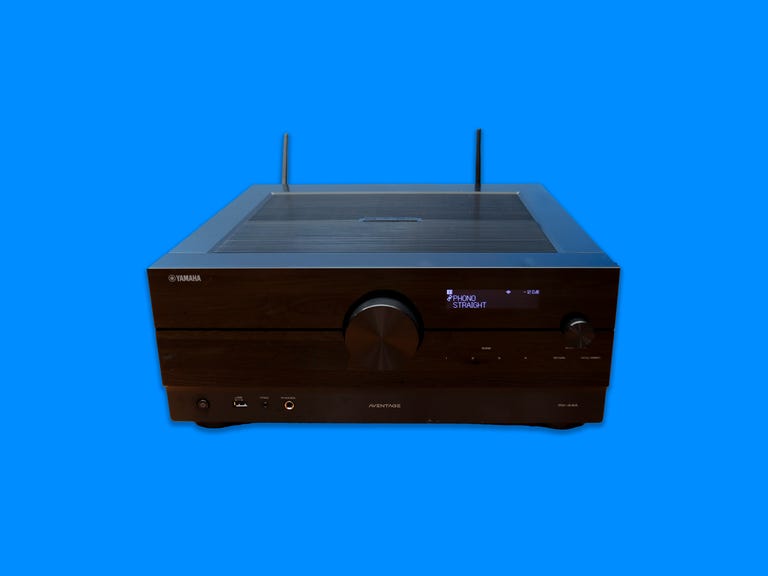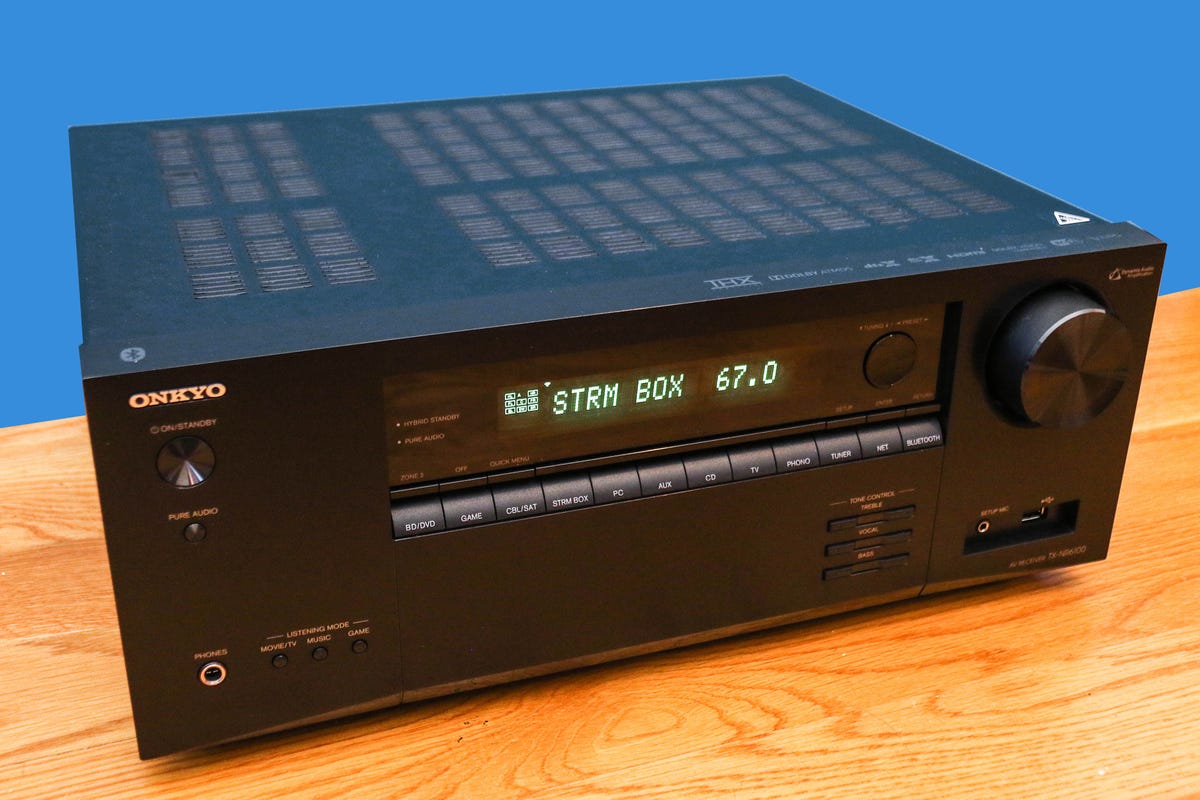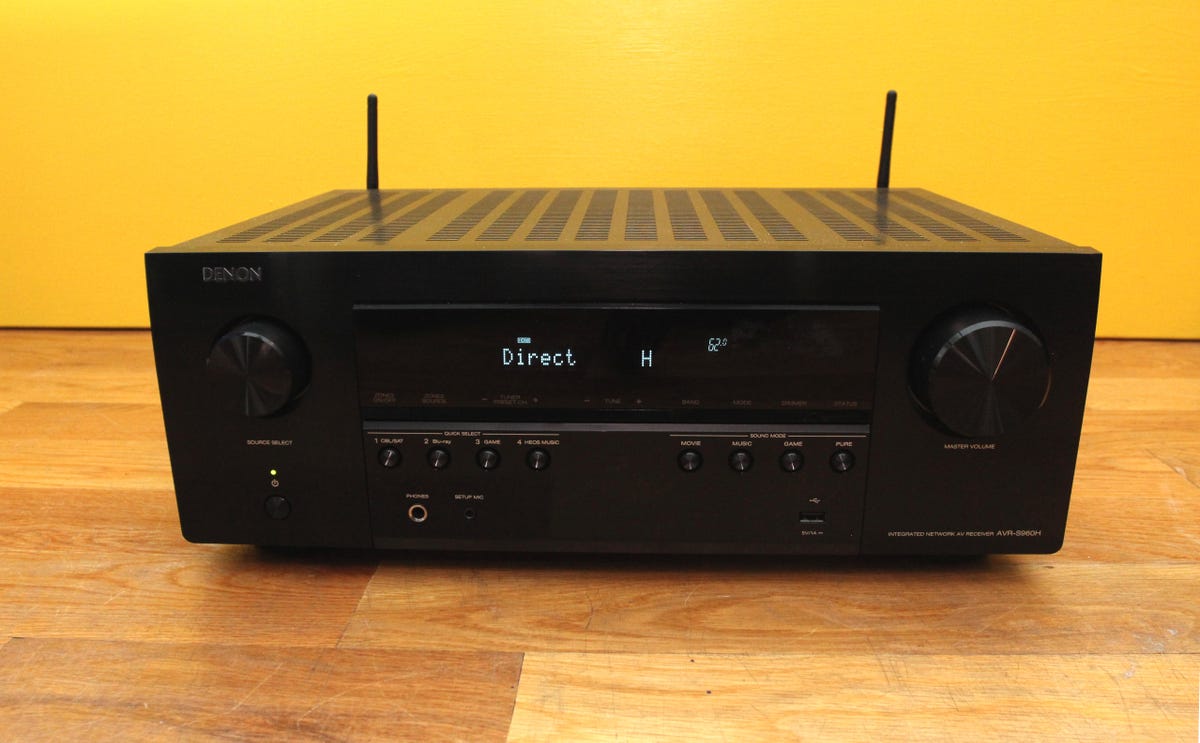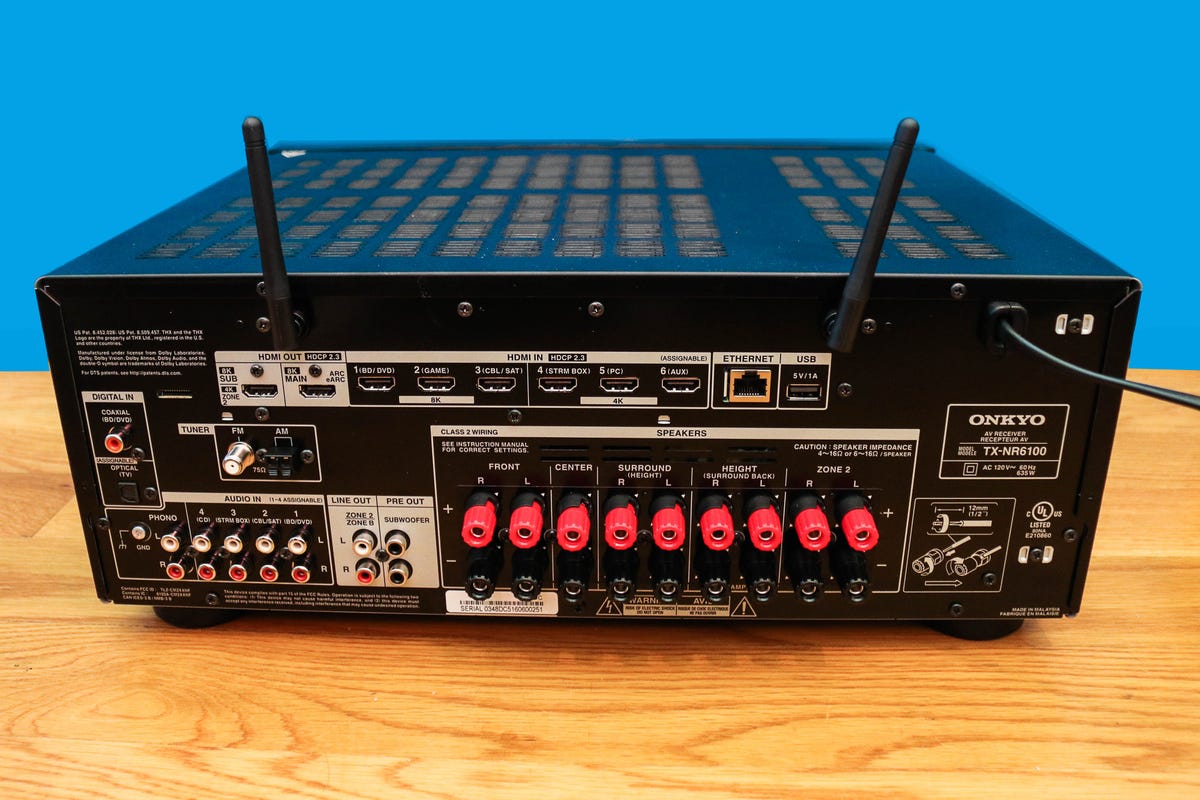What to consider
Channels
If you’re looking for a Dolby Atmos receiver, the minimum number of channels you should be looking at is a 7.1 (or also written as 5.1.2 channel). Power specs are mostly made up, but anything over 100W per channel in stereo is good.
HDMI inputs
All modern components use the universal HDMI standard and so you should choose a receiver which has as many of these inputs as possible. If you’re a gamer choose one which has HDMI 2.1 so it can transmit 4K/120Hz to a TV as well.
Dolby Atmos capability
Most receivers over $500 include Dolby Atmos capability, but you don’t need to buy height speakers straight away. You can always add them later.
Wi-Fi music streaming
Alongside Bluetooth, many models have onboard Wi-Fi connectivity for wireless music streaming. Standards to look for include Spotify Connect, Apple AirPlay and Google Chromecast built-in.
A movie theater may still be the best place to catch a movie thanks to the stunning picture and immersive sound, but you can’t always watch the latest blockbusters on the big screen. You can certainly bring some of that big screen magic to your home, though, with an AV receiver. The best models come equipped with 8K video, Dolby Atmos and Wi-Fi music streaming capabilities. However, those detailed specs and hardware can make shopping for one a bit daunting. CNET is here to help, and we’ve rounded up the best AV receivers you can buy right now.
What is the best AV receiver overall?
So, which is the best AV receiver for you? I’ve tested the most popular models between $500 and $2,000 to help you find the best AV receivers 2024 has to offer.
If you divide your time between watching TV and listening to music, there are several models that can do both well, including two excellent Onkyo receivers in the TX-NR6100 and TX-RZ50. The recently reviewed Sony STR-AN1000 is also a strong performer under $1,000, though isn’t quite as well specified as its competitors.
Best AV receivers of 2024
The TX-NR6100 is the follow-up to my favorite receiver of the past few years, the Onkyo TX-NR696. Like its predecessor, the NR6100 offers great sound and a wealth of connectivity (including 4K/120Hz support for gaming consoles). Streaming options include Chromecast built-in, DTS Play-Fi, Spotify Connect, Sonos, AirPlay and Bluetooth. With a bit more power than the Sony STR-AN1000 and a keener price than any competitor, the Onkyo TX-NR6100 is the best receiver value under $1,000. At the time of writing the receiver is selling for $481 at Amazon which is an amazing deal.
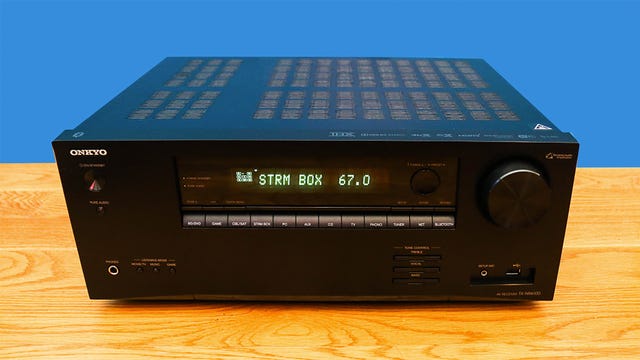
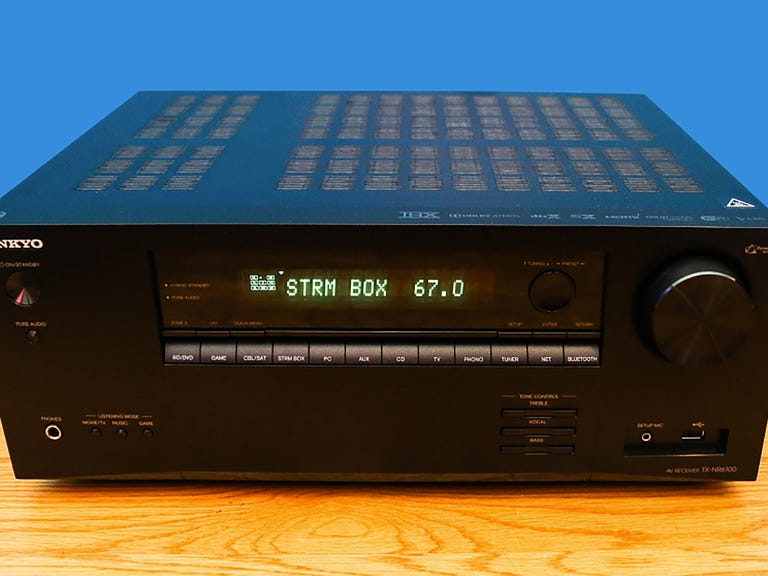
Best receiver for gaming
Sony STR-AN1000
Sony went away for a couple of years, but came back better than ever with the STR-AN1000. This model offers all of the latest features including HDMI 2.1 (4K/120Hz) support. It includes “works with Sonos” certification, but the reason to buy it is that it’s a solid performer. It also has one of the most sophisticated setup routines yet, so dialing in great sound is even easier.
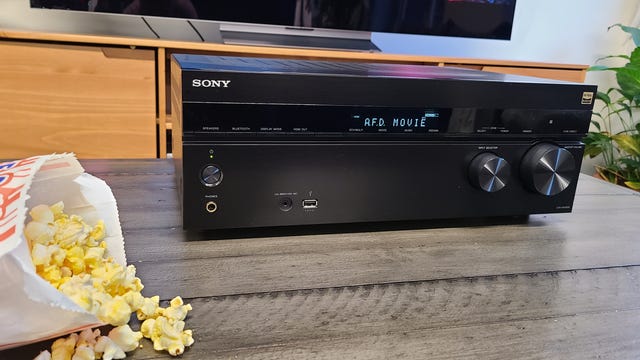
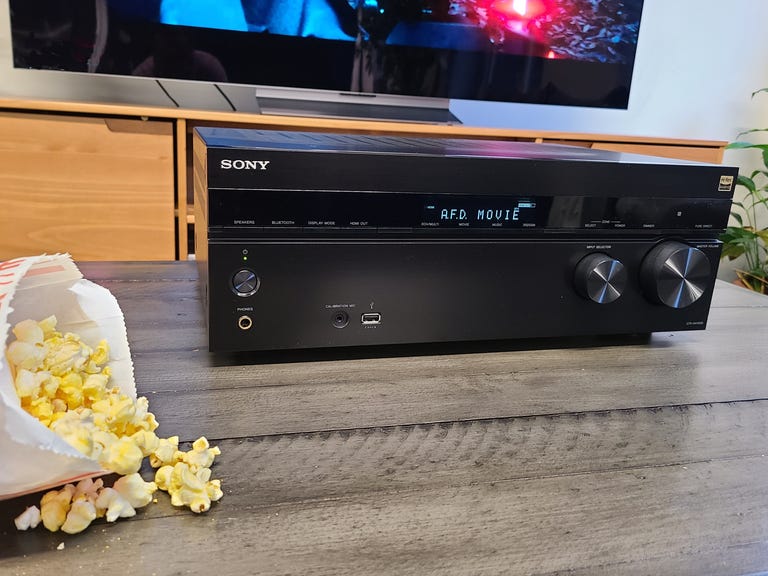
Best receiver under $1,600
Onkyo TX-RZ50
Onkyo’s TX-RZ50 is a perfect step-up model for those looking to upgrade their systems for a set of better-quality speakers or to add a turntable. Like its budget-oriented label mate, the TX-NR6100, it’s stacked with features including the audiophile-level calibration called Dirac Live, as well as the best streaming suite offered in an AV receiver. On that point, being able to request songs directly from Google Assistant or Amazon Alexa is a real boon.
What improvements does the $1,200 TX-RZ50 offer over the $500 TX-NR6100? Firstly, it offers double the number of 8K compatible inputs (six versus three) plus it boasts more power (120 watts versus 100 watts). It also has two-way Bluetooth for streaming as well as listening on wireless headphones.
The TX-RZ50’s performance was excellent whether listening to streamed music, or watching a movie: I hadn’t heard Dolby Atmos sound this convincing in a long time. The addition of Dirac Live adds its own complexities in setup — please, only use the Onkyo Controller mobile app in combination with the supplied microphone — but doing so rewards with a highly involving performance.
Be aware the Onkyo is often out of stock, but as an alternative the Yamaha RX-A4 is even better with movies.
